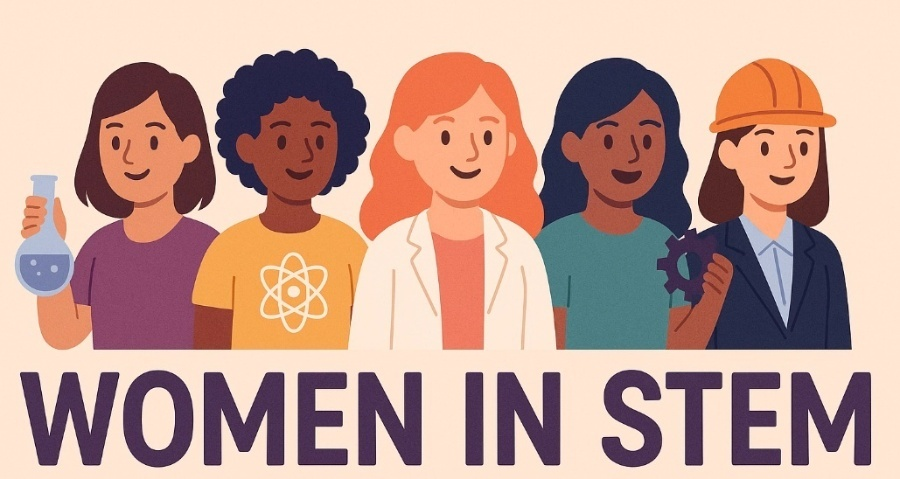Attracting women and girls to science, technology, engineering and mathematics (STEM) and providing an environment for them to thrive and progress is a shared responsibility of government, academia, the education system, industry, and the community. I will discuss the Women in STEM Decadal Plan1, developed by the Australian Academy of Science (AAS) in collaboration with the Australian Academy...
This presentation examines the intersection of gender equity and scientific innovation through the lens of Small-Scale Chemistry (SSC), an educational approach designed to make chemistry more accessible, cost-effective, and environmentally responsible. In many parts of the world—particularly in South and Southeast Asia—systemic barriers continue to limit the participation of women in science,...
Although the Philippines ranks highly in gender parity overall, significant gaps persist in STEM—especially in engineering, manufacturing, construction, and leadership roles.Women hold ~45% of bachelor’s degrees in science & technology, but only ~25% in engineering/manufacturing/construction. Barriers include female stereotype reinforcement, gendered career opportunities, workplace bias and...
Women in marine science in Thailand have made remarkable strides despite facing systemic challenges in access, representation, and recognition. This talk explores the evolving landscape for women in the field—from early barriers to emerging leadership roles in research, education, and conservation. Drawing on personal experience and national initiatives, the presentation highlights how...
South Korea faces a serious challenge due to its rapidly declining birthrate—recording the lowest among OECD countries. This decline in birthrate is leading to a shrinking workforce, adversely affecting the supply of science and technology talent. In response, the Korean Academy of Science and Technology’s Committee for Women Scientists has initiated the issue report to explore how experienced...
The Gender Gap in Research and Development in Sri Lanka Nadira D. Karunaweera1,2, Rajika Dewasurendra2, Vidyani Kulatunga2 1 National Academy of Sciences of Sri Lanka, 2Department of Parasitology, Faculty of Medicine, University of Colombo, Sri Lanka Research and Development (R&D) sector plays a key role in Sri Lanka by improving the nation’s science and technology competencies, but the gender...
This presentation explores the evolving role of Turkish women in science and technology, highlighting both progress and persistent challenges. While women in Türkiye have increasingly entered STEM fields and achieved notable success in academia and research, they remain underrepresented in leadership roles and high-impact innovation sectors. In 2024, women hold approximately 28% of senior...
Research The Information and Communication Technology (ICT) sector is recognized as a key driver of economic growth and innovation, both globally and within Nepal. However, despite women comprising over half of Nepal's population and achieving higher university enrollment rates than men, their active participation in the ICT workforce is strikingly low in Nepal, hindering the sector's...
Indian women scientists and researchers have made significant strides across various fields of science and technology, overcoming societal and infrastructural challenges. Their contributions span diverse domains including space research, medicine, agriculture, information technology, and environmental science. Pioneering figures like Dr. Kadambini Ganguly, Dr. Janaki Ammal, and Dr. Tessy...
It is commonly believed that women in Russia are underrepresented in science and industrial production. Their primary occupations are focused on household responsibilities, child-rearing, or careers in humanities and creative fields. However, recent research shows that this situation has changed: women now comprise approximately 30% to 40% of researchers in the engineering and natural...
Equal participation of both men and women in science and technology is essential for promoting
a balanced socio-economic advancement in both of the developed and developing countries. Little attempt
has been made to examine the gendering process in academia or research institutions in developing
countries. This paper reviewed the gender disparity among scientists in a research organization...
We will itroduce Japanese situation of women in STEM.
Despite ongoing efforts to promote gender equity, women in STEM in Japan continue to face structural and cultural barriers to advancement. Founded in 2019, Women in Science Japan (WISJ) aims to address these challenges by providing a platform for peer support, mentorship, and professional development. This talk offers a retrospective analysis of WISJ’s evolution over six years, examining the...
In Japanese universities—including in STEM fields—female representation among faculty and students remains low. During my presidency at Tokyo Institute of Technology (now Science Tokyo) from April 2018 to September 2024, I promoted diversity and gender balance by introducing women-only faculty recruitment and implementing a female student admissions quota. In this talk, I will share the...
Discuss the situation in Math. as well as some of the initiatives in STEM in Japan

